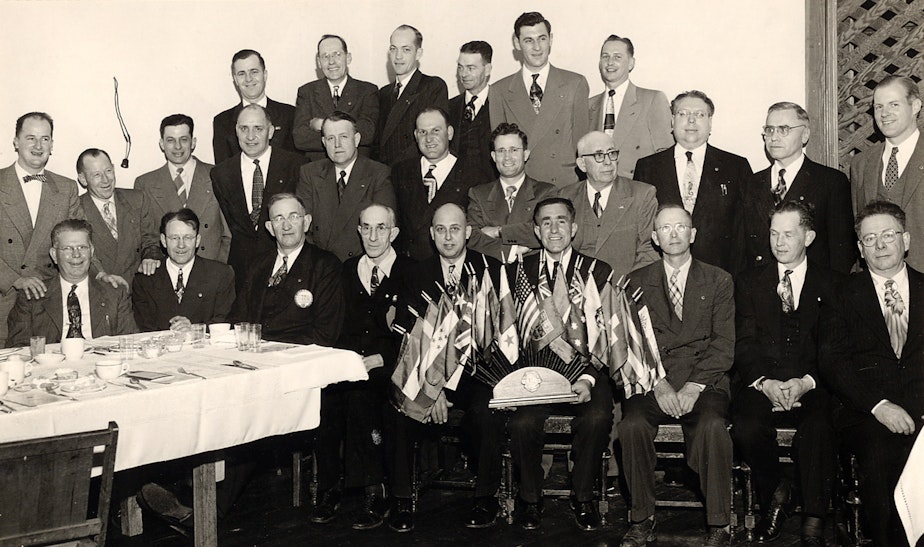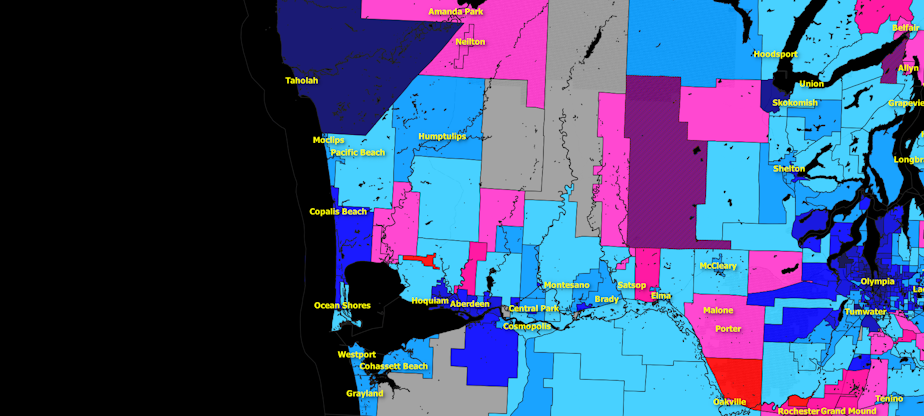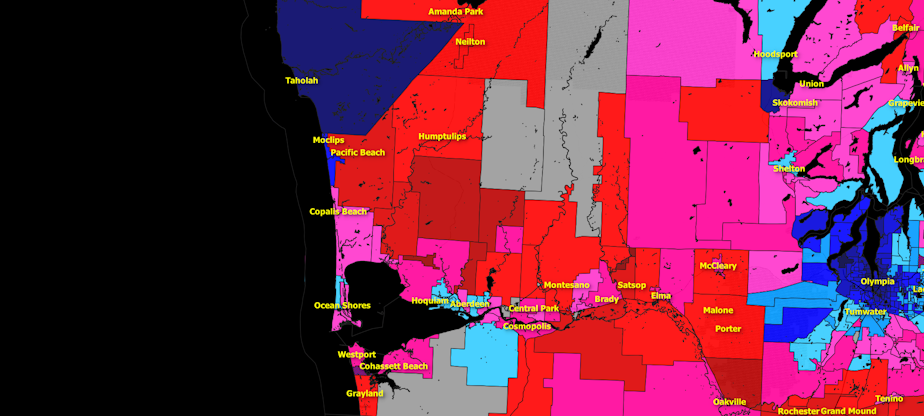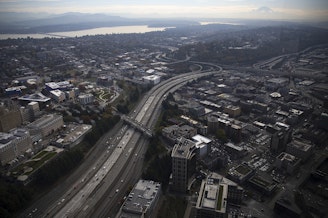Bear meat-loving Washingtonians in historically blue county voted for Trump in 2016. Will they do it again?

In 2016, Grays Harbor County went Republican for the first time since Herbert Hoover back in 1928. No place saw a bigger flip there than the small mill town of McCleary, west of Olympia.
To understand why (and where things may be headed in 2020), it helps to start with a recent battle over hundreds of pounds of bear meat that goes into the stew at the annual McCleary Bear Festival. Or, it used to.
The town had been dishing up bear meat to fair-goers since the festival got started back in 1959. It started as a joke competition over which county had the tastiest bear meat, but by 1972, according to the Seattle Daily Times, “everyone just gets together and eats bear because bear eats trees, and trees are the economic backbone of this area.”

Then in 2019, everything changed after the Center For Biological Diversity brought a lawsuit against certain kinds of hunting on timber lands , such as bear baiting.
Sponsored
The lawsuit, filed in 2018, led to a moratorium on the practice, which voters had already banned in other contexts back in the late 1990s.
For McCleary, it meant no bear meat in the bear stew that had helped define this community for over half a century.
Jenna Amsbury, who serves on the McCleary City Council, said she’s not happy about the moratorium. “People like tradition. It'd be nice to have different ways that you could work around regulations,” she said.
For its part, Washington’s Department of Fish and Wildlife said McCleary could still acquire bear meat while the state awaits a ruling on the lawsuit, by using conventional hunting techniques.
But the lack of bear meat is a psychic blow for McCleary, and symbolic of long-simmering political tensions over the environment and other issues, which boiled over in 2016 when Donald Trump became the first Republican presidential candidate to win Grays Harbor County since 1928.
Sponsored
Ben Anderstone, a political consultant based in Seattle, called McCleary, “the epicenter” of the swing to Trump in Washington state, which mirrors changes that occurred in places like Wisconsin in the upper midwest. In total, Trump managed to flip 217 counties that had voted Democratic in the last election.
In McCleary's case, the change in 2016 was particularly dramatic.
“It's an ancestrally democratic town. It voted for Trump and in 2018, it even voted Republican for US Senate against Democratic incumbent Maria Cantwell," Anderstone said. "So it’s an area that’s really had a sharp change.”

Presidential voting maps for Grays Harbor County show a dramatic swing from 2012 (above) to 2016 (below).
Sponsored

Why did this place go so red so fast?
Linda Thompson, president of the McCleary historical society and a Democrat, emitted a deep sigh when asked that question. “I don’t know why the change. I don't know who switched because the people that I know are longtime Republicans,” she said.
Sponsored
Thompson said she can only think of one person who flipped from Obama to Trump.
“He's not in this county. But he's my son,” she said. Thompson added that her son voted for Obama and loves Obama, but now he’s a Trump voter, mostly because he believes Trump is a businessman who will be good for economic growth.
He lives just down the road in Shelton, in Mason County, which like Grays Harbor County, also turned red for Trump in 2016. Republican Suzanne Hickel lives in Shelton too. She supported Obama and used to be an independent, but last election she voted Trump. Ever since then, she’s voted a straight Republican ticket.
“I never voted party. I really only started voting party in the last election,” she said.
Hickel calls Trump a “strong man,” and likes that he told Governor Inslee to crack down harder on protests. She thinks protests against unfair policing are justified, but she doesn’t support approaches like the Capitol Hill Occupied Protest and other, more radical tactics.
Sponsored
“I think Trump will wield a little bit more power and force to hopefully get the country back on track,” she said.
But the political change here is about more than Donald Trump.
Historian Steve Beda at the University of Oregon, who earned his PhD at the University of Washington, said the flip to Trump may appear to be abrupt, but voters in northwest timber country have been losing faith in the Democratic Party since the 1970s.
For most of the 20th century, towns similar to McCleary, in Washington and Oregon, were radically pro-union and pro- Democratic Party, Beda said.
Grays Harbor County only backed Democrats for president for almost a century, when the rest of Washington state had backed Republican candidates, including Dwight Eisenhower, Richard Nixon, Gerald Ford, and Ronald Reagan.
Sponsored
But Beda said three major changes occurred.
First, labor unions in the timber industry declined (as they had in other industries). Second, Republicans from places like Orange County, California moved to rural Washington and Oregon in search of cheap land and lower taxes, and brought their politics with them.
But Beda says a third, arguably most significant turning point occurred when Democrats started to embrace a new kind of environmental politics to protect forests, which never delivered on promises to also save jobs.
President Bill Clinton’s 1994 Northwest Forest Plan, for example, was sold as striking that balance. But in the end, a lot of the money promised for job retraining to help timber workers transition away from a resource extraction, “never came to fruition. It was never paid out,” Beda said.
As a result, timber towns like McCleary felt like they were on their own, abandoned by a Democratic Party they had backed since the New Deal, which now seemed to favor urban environmentalists over their worries about putting bread on the table.
That history provides context for understanding how places like Grays Harbor County flipped for Trump in 2016, but it doesn't mean they'll vote for Trump again in 2020. Ben Anderstone is forecasting that Joe Biden could win in Grays Harbor County this year, calling that race for the county a “toss up.”
Anderstone says there are still plenty of people with deep ties out here to the Democratic Party, as well as in-migration to the fancy coastal community of Seabrook, which Ben Anderstone calls "a political satellite" of Seattle.
On the other hand, Anderstone says, the recent primary results in Washington state suggests some rural red places are getting even redder. And he points out that in 2018, when Democrats had a good year by taking back the U.S. House of representatives, Democrat Maria Cantwell lost “by pretty convincing margin” in Grays Harbor.
In other words, the drift away from the Democratic Party in Northwest timber country may be hard to stop over the long term.




